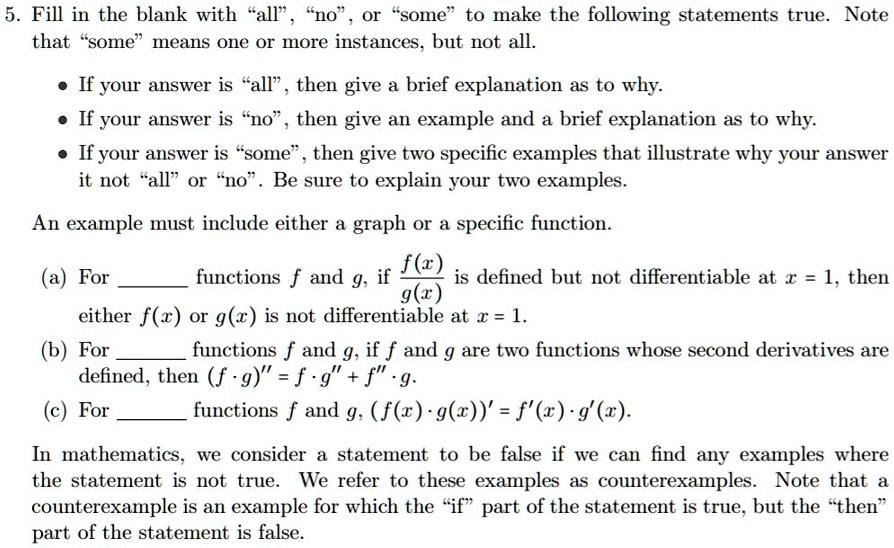Answered step by step
Verified Expert Solution
Question
1 Approved Answer
5. Fill in the blank with all, no, or some to make the following statements true. Note that some means one or more instances,

5. Fill in the blank with "all", "no", or "some" to make the following statements true. Note that "some" means one or more instances, but not all. If your answer is "all", then give a brief explanation as to why. If f your answer is "no", then give an example and a brief explanation as to why. If your answer is "some", then give two specific examples that illustrate why your answer it not "all" or "no". Be sure to explain your two examples. An example must include either a graph or a specific function. (a) For functions and g, if f(x) g(x) is defined but not differentiable at x = 1, then either f(x) or g(x) is not differentiable at x = 1. (b) For functions f and g, if and g are two functions whose second derivatives are defined, then (f.g)" = f.g" + f". g. (c) For functions f and g, (f(x) g(x))' = f'(x) g'(x). In mathematics, we consider a statement to be false if we can find any examples where the statement is not true. We refer to these examples as counterexamples. Note that a counterexample is an example for which the "if" part of the statement is true, but the "then" part of the statement is false.
Step by Step Solution
There are 3 Steps involved in it
Step: 1

Get Instant Access to Expert-Tailored Solutions
See step-by-step solutions with expert insights and AI powered tools for academic success
Step: 2

Step: 3

Ace Your Homework with AI
Get the answers you need in no time with our AI-driven, step-by-step assistance
Get Started


